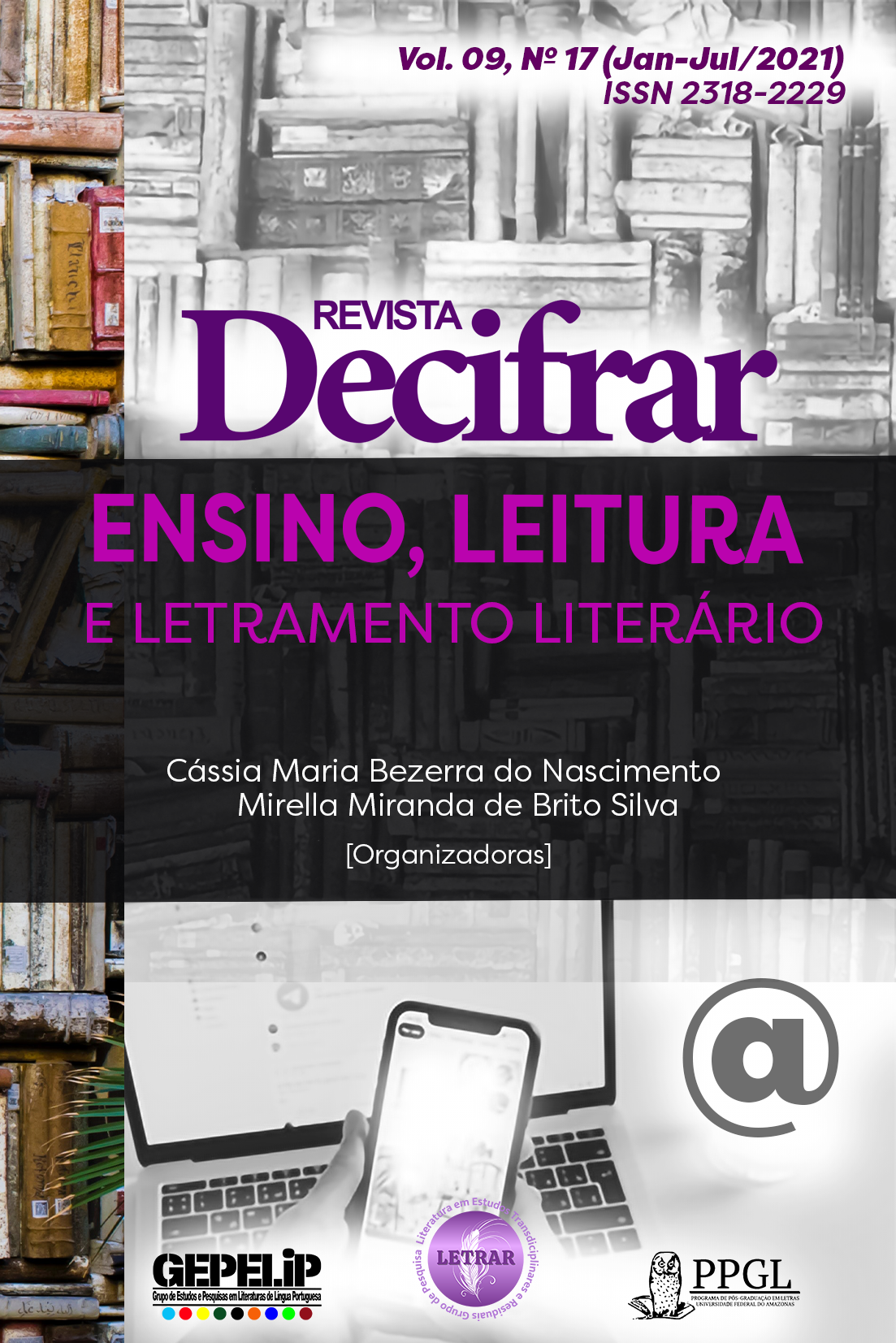A TRAPAÇA SALUTAR: POESIA, LÍNGUA E GRAMÁTICA
POESIA, LÍNGUA E GRAMÁTICA
DOI:
https://doi.org/10.29281/rd.v9i17.8847Abstract
This work involves the poetry of Manoel de Barros and Gilberto Mendonça Teles as different instruments to approach the functioning and teaching of the language. It is understood that the enjoyment of literature is the primary property, but its use at school is not devoid of formative and informative intent. And, although the aesthetic nature of literature is its inherent and preponderant essence, its use for assimilation of linguistic rules is generally contraindicated, its cognitive functioning is indisputable, and the mastery of the language, among other knowledge, is enhanced by literary reading. , in a fluency that can provide the association “sweet and useful” horaciana. In contrast to the tense rigor with which the teaching of the cultured norm often occurs, literature can be included as instruments for the development of language skills. For reflection on the relationship between the rigor of language teaching and the freedom made possible by the literary text, such as the works Arte de armar, Livro sobre nada and O livro das ignorãças seem to constitute an interesting corpus for thinking about the language and understanding its configurations. Understanding the importance of the educated norm, whose debate has already created a lot of confusion, it is understood that it is harmless to pursue the cult domain using radically rigor in the teaching of the norm. Through reading, analysis and bibliographic research, the intended scope is the idea that the playful way of constructing writing favors better involvement and assimilation of the faces of language and grammar.
Downloads
Downloads
Published
How to Cite
Issue
Section
License
Todos os artigos desta revista obedecem a licença Creative Commons - Attribution 4.0 International (CC BY 4.0).










